Researchers in Scotland, Sweden and Canada explore the potential of the squishy detritivores
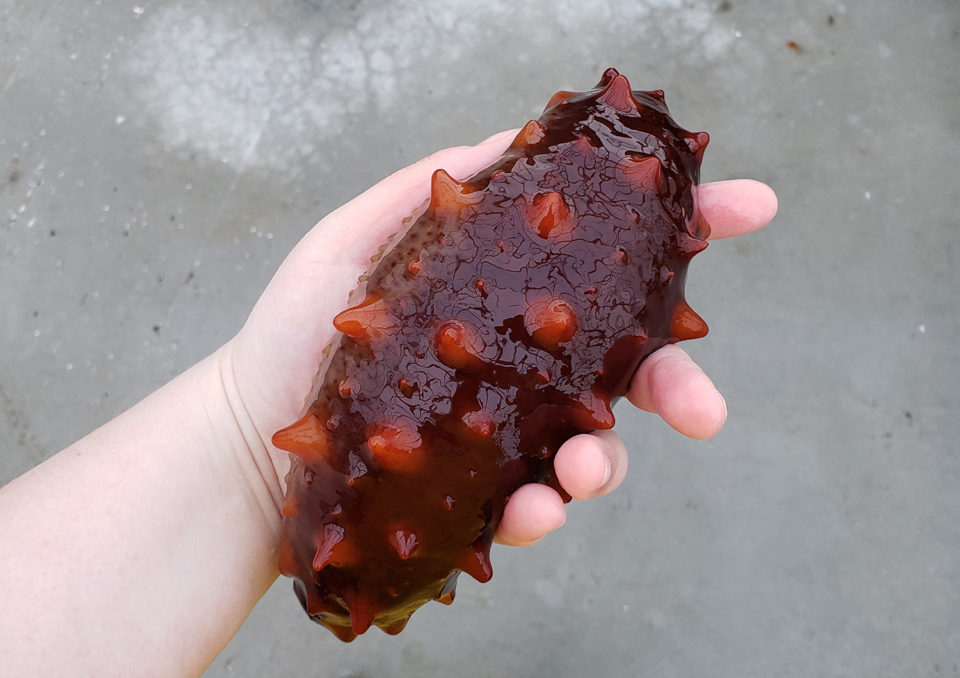
“Nature’s recyclers” is an apt moniker for sea cucumbers, exotic marine creatures comprising a digestive tract – simply a hole at either end – housed in a fat squishy body with leathery skin. They are colorful creatures that breathe through their butts and range in size from around 2 centimeters to nearly 2 meters. There are more 1,700 species around the globe.
Sea cucumbers also play an important part in bioremediation, as they feed on seabed detritus, which is broken down internally, removing pollutants and toxins in the process. They are the Roombas of the ocean floor.
Such a lifestyle description may not immediately whet everyone’s appetite, yet sea cucumbers are harvested and traded in more than 70 countries. They are particularly valuable to the Asian market, where they are sold cooked and dried, as bêche-de-mer, trepang or inelegantly as “sea slugs.” The price for a dried specimen can be up to (U.S.) $3,000 per kilo. Depending on the species, these creatures are also eaten cooked, pickled or raw, and nothing is wasted. Their intestines and gonads are pickled, and some are processed for their oil, which is popular in traditional Asian medicine.
The first known use of sea cucumbers as a food dates back more than 1,000 years in China, and they have been increasingly exploited since. In the last four decades, growth in demand from the Asian market has led to overexploitation of local fisheries, and the search for populations elsewhere in the world, with the result that sea cucumber stocks are now being depleted in many countries through boom-and-bust fishing cycles.
To overcome this issue, production of juveniles of the popular Japanese sea cucumber (Stichopus japonicus) was developed for sea ranching in the 1980s in China and Japan, but little interest had been shown in undertaking similar work in the West until the past decade.
Now, researchers in several countries are undertaking projects to breed sea cucumbers to replenish exploited fisheries, for ongrowing as a food resource, and to help minimize the environmental impacts of fish farming.
The Advocate spoke to researchers in Scotland, Sweden and Canada to learn more about their work.
https://www.aquaculturealliance.org/advocate/sea-cucumber-project-redefines-traditional-farming-madagascar/
In Scotland, an aid for salmon farms
In Scotland, Melinda Choua, Ana Rodriguez, Soizic Garnier and Marta Ponti, four Ph.D. students from the universities of Strathclyde and Heriot-Watt, launched a company, Blue Remediation, to study the efficiency of sea cucumbers in absorbing aquaculture biomass.
Using wild-caught sea cucumbers, the team aimed to find the optimal conditions and number of sea cucumbers that salmon producers could deploy beneath their cages to minimise the impact of waste. They hoped that their work would enable producers to increase the allowable biomass of fish, which is partly determined by the impact of fish farm discharges on the seabed.
“Sea cucumbers could be the answer to reconciling the incompatibility between fish production and environmental conservation, by reducing pollution of the marine environment,” Garnier said.
Due to COVID-19 restrictions, the study was carried out by researchers at the Scottish Association for Marine Science (SAMS), led by Dr. Georgina Robinson, while the Blue Remediation team concentrated on building a computer model to integrate with SAMS-developed NewDEPOMOD software. This is widely used to predict discharge impacts and enables fish farmers to optimize use of aquaculture sites, in line with environmental capacity.
Blue Remediation is now seeking funding to undertake a larger trial to breed sea cucumbers, refine their computer model, determine the impacts of using different species, develop containers for use on the seabed, determine parameters for monitoring their health, wellbeing and controlling disease, and ascertain whether food or pharmaceutical use is the best route for the animals once their useful life is complete.
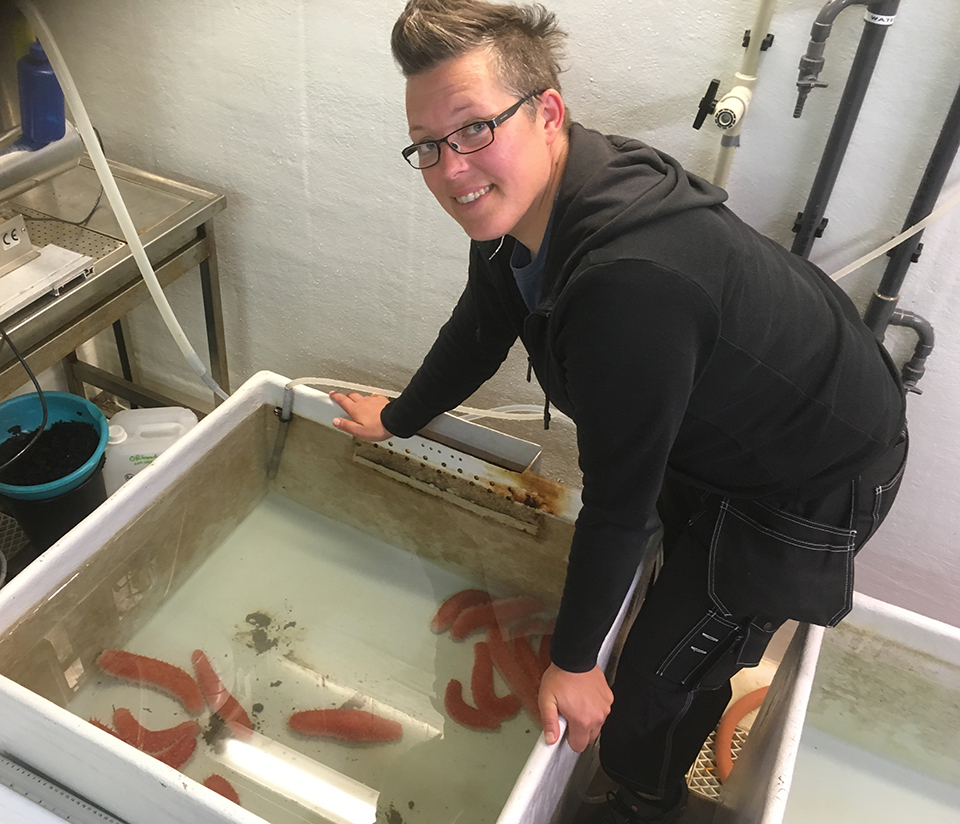
In Sweden, a restoration effort
In Sweden, marine biologist Dr. Ellen Schagerström from the Department of Biological & Environmental Sciences at the University of Gothenburg, last year succeeded in breeding the first red signal sea cucumber (Parastichopus tremulus) in captivity.
Caught as a bycatch in trawlers, some local populations have been virtually fished out, and she hopes that her research will provide a way to restore them to the point where they will once again become self-sustaining. A further aim is to develop a place for sea cucumbers in the sustainable cultivation of seafood and circular aquaculture.
“Sea cucumbers have a natural survival of less than 1 percent in a laboratory environment, and that is without anyone trying to eat them. If there is one thing that is guaranteed to happen in the sea, it is that someone is going to try to eat you,” Schagerström said.
Many of the species of sea cucumbers currently cultivated come from tropical or temperate waters, so her first task was to adapt protocols to suit a cold-water species.
“We initially concentrated on the first larval stage and food requirements and managed to produce healthy juveniles. The next step is to find out how fast they grow, how much waste they can eat, when they reach sexual maturity and how long they live,” she said.
Schagerström has a broodstock of 20 sea cucumbers for the next stage of her research and is awaiting the breeding season in July, although use of photoperiod is also being considered. They are being cosseted in optimal conditions in the laboratory.
She explained that the broodstock had been both difficult to procure and to transport as a live animal, because they appear to suffer from motion sickness. To overcome this issue, individual cages are being designed to hold them securely in aerated water during their two-hour journey to the laboratory.
“I feel privileged to be working with such interesting creatures and to be at the start of a potentially ground-breaking industry. The world’s biggest sea cucumber farm is in China, where they grow them in drawers in controlled temperature and salinity conditions and use probiotics to produce healthy specimens. I see no reason why we cannot recreate such a system here, so watch this space,” she said.
In Canada, a lot of potential
Dr. Emaline Montgomery, a research scientist with the Department of Fisheries and Oceans Canada, is studying Apostichopus californicus, the giant red sea cucumber that can grow up to 50 centimeters long.
Montgomery’s lab work is currently taking place at Deep Bay, a shellfish research facility operated by Vancouver Island University (VIU) and is focused on co-cultivation of different species to improve the sustainability and profitability of aquaculture.
“The giant red sea cucumber is an ideal candidate for co-cultivation because it Hoovers up deposits off the sea floor, and can fetch a good price in international markets,” said Montgomery.
However, keeping the animals where they are needed is an issue that needs to be overcome and she has been working with industry partner BC Pacific Oysters to develop cheap, easy-to-use containment systems that will enable sea cucumbers to become an integral part of any shellfish farm and provide a new revenue stream.
“We have been testing modified lantern nets and oyster cages and have future plans to trial hard-sided containers with sea urchins and sea cucumbers in different compartments,” she said.
A major goal for this years’ work is looking at the commercial feasibility of growing sea cucumbers in conjunction with salmon farms, in terms of benefits and risks to both species. It is hoped that they can be used to graze the open-water net pens to reduce biofouling and reduce the need for power washing or anti-fouling methods. Longer term, she aims to breed sea cucumbers in a land-based hatchery, instead of relying on wild-caught animals.
“I have created some mini net pens in the lab for the first part of the trial and will move the sea cucumbers out to our partner Creative Salmon’s cages later in the year, where I am hopeful of some promising results,” Montgomery said. “There is so much potential for these creatures.”
Follow the Advocate on Twitter @GAA_Advocate
Now that you've reached the end of the article ...
… please consider supporting GSA’s mission to advance responsible seafood practices through education, advocacy and third-party assurances. The Advocate aims to document the evolution of responsible seafood practices and share the expansive knowledge of our vast network of contributors.
By becoming a Global Seafood Alliance member, you’re ensuring that all of the pre-competitive work we do through member benefits, resources and events can continue. Individual membership costs just $50 a year.
Not a GSA member? Join us.
Author
-
Nicki Holmyard
Nicki Holmyard has written about the seafood industry for longer than she cares to remember! A committed pescetarian, she is also a partner in the UK’s first fully offshore rope-grown mussel farm.
Tagged With
Related Posts
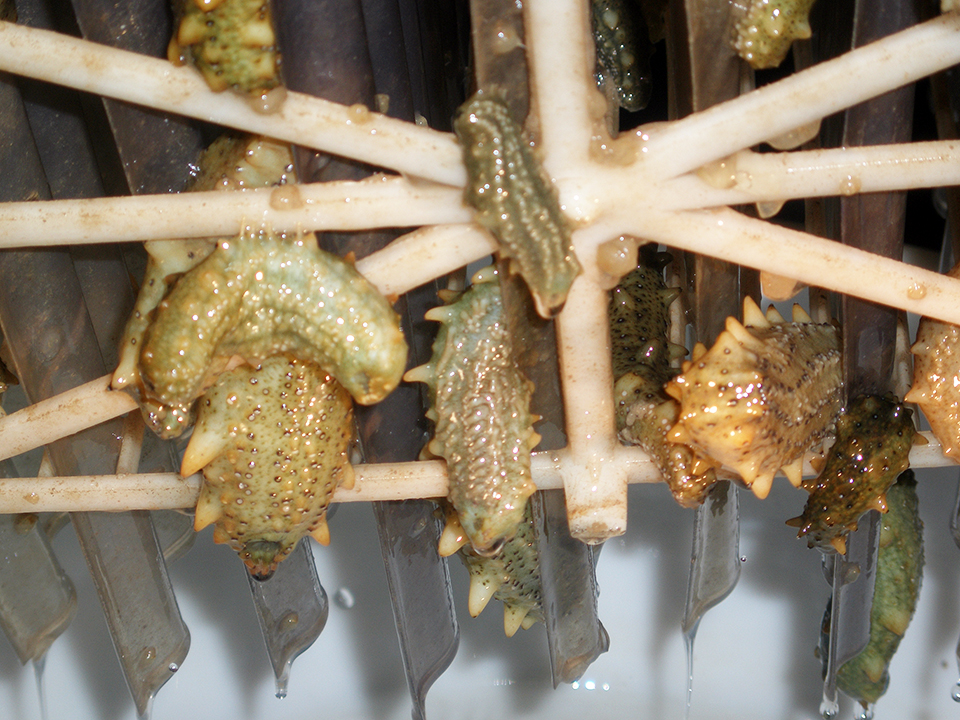
Health & Welfare
Probiotics improve nursery performance of juvenile sea cucumbers
While sea cucumbers are one of the most prized seafoods in China and Asia, their production suffers from suboptimal juvenile production. The use of proper feeds and overall management in the nursery can improve yield and survival.
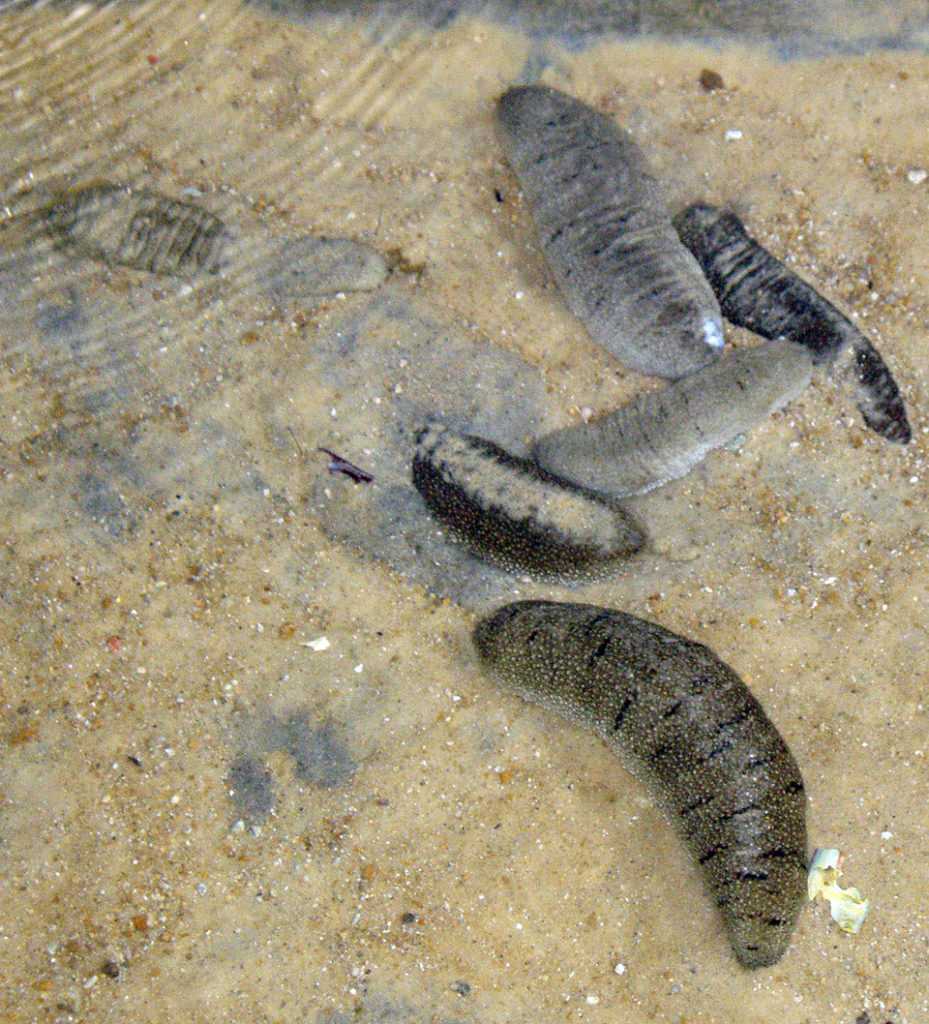
Health & Welfare
Sandfish, profitable sea cucumbers, also supply bioremediation
Sandfish, a high-value sea cucumber, supports the aquaculture of other fish species by cleaning up waste on the bottoms of ponds or sea cages.
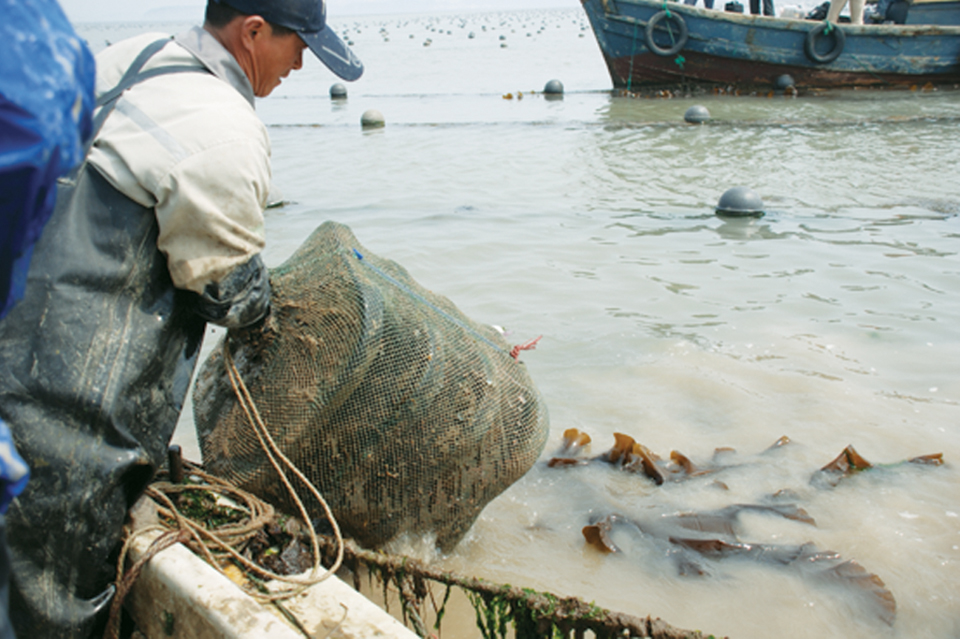
Responsibility
Sea cucumbers enhance IMTA system with abalone, kelp in China
In the authors’ recent study, sea cucumbers were added directly to abalone cages with no modifications of the culture equipment to form a simple, low-cost IMTA production system.
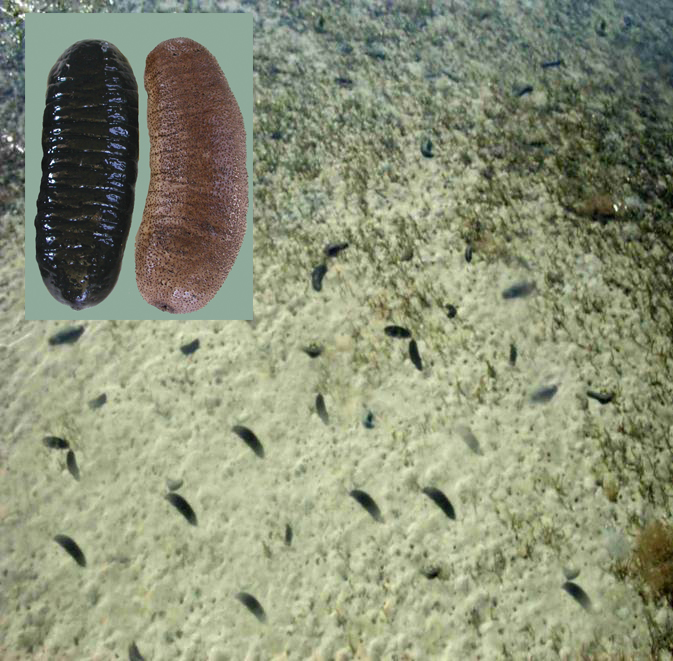
Intelligence
Tropical sea cucumber culture
Advances in the culture of sea cucumber species are countering the overexploitation of wild populations. Protocols for intensive hatchery production are well established, and juvenile production efficiency has improved.



